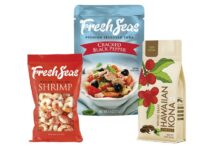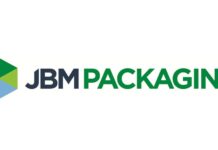Plastics will continue to be the leading protective packaging material, which accounts for 71% of the overall $33.2 billion worldwide packaging sector, as per a recent insight. The global protective packaging demand is anticipated to advance at a rate of almost 5% every year until 2027, so as to reach a figure close to $40 billion.
As per the insight, the fastest-growing market for protective packaging is going to be supported by more usage of protective mailers, air pillows, and other flexible products when it comes to e-commerce fulfilment of orders. Other factors that contribute to the growth are the surging shipments of e-commerce items that are delicate as well as fragile, such as electronics, which apparently require better protection so as to avoid damage when it comes to transit. These materials include the likes of moulded foams in order to keep items in place, surface protection films so as to prevent scratches, and rolled foam for more cushioning.
Slight paper growth is projected
It is well to be noted that the paper will go on to witness a minor growth since there is a lot of talk about sustainability with bans related to EPS foam products that will encourage the substitution of plastic with paper. Apparently, paper fill is seeing more usage in e-commerce for shipping fewer delicate items that are related to books and clothing. That said, in certain manufacturing applications, a lacuna of suitable options for plastic can indeed go on to support demand when it comes to foams like moulded EPS. Notably, the demand for moulded fibre is all set to experience strong growth with an increased usage of non-durable goods packaging. The fact is that moulded fibre is replacing polystyrene in certain manufacturing applications since it is more environmentally friendly when it comes to recyclability as well as degradability.
E-commerce all the way
It is well to be noted that worldwide product demand is going to be driven by a double-digit growth rate when it comes to e-commerce sales, besides rising durable goods production as well as its protective packaging for intensive non-durable goods like pharmaceuticals, chemicals, and also the food and beverage industry.
The fact is that e-commerce has become the fastest-growing market in terms of protective packaging over the past decade since online purchases continue to form a larger share in terms of retail sales, especially when it comes to the United States as well as China. Apart from this, e-commerce is also quickly rising as far as low-income countries are concerned since internet access as well as smartphone penetration have grown to a considerable extent.
A thorough focus on the right size as well as source reduction by online retailers is sure to drive demand when it comes to protective mailers. Besides, the bloated usage of corrugated boxes as far as e-commerce shipping is concerned will go on to support the demand for protective packaging that is always used in sync with the boxes, like air pillows, bubble wrap, and paper fills.
The sustainability impact
There are sustainability concerns such as the usage of non-recyclable materials as well as the carbon footprint when it comes to packaging production, and they all have a lasting impact when it comes to primary packaging. They also go on to affect future growth as well as the product mix in the protective packaging segment. These effects will go on to have a wider impact when it comes to foam collective packaging.
Although when it comes to plastic protective packaging, especially foam protective packaging, there is going to be a continuous focus on environmental concerns. Plastics are going to continue to be used when it comes to protective packaging due to their advantageous traits such as crush resistance as well as moisture resistance, which can help prevent leakage during transportation.
Output needs to be looked into
It is important to note that the market for protective packaging products is heavily influenced by trends that surround manufacturing output as well as e-commerce sales. The fact is that all across 2010 to 2020, the demand for protective packaging grew faster vis-à-vis the manufacturing output because of increased awareness when it comes to protective packaging’s ability to lessen the rate of returns as far as damaged goods are concerned.
The rise of commerce has made sure that there is an increase in the number of packages that require protection.



























